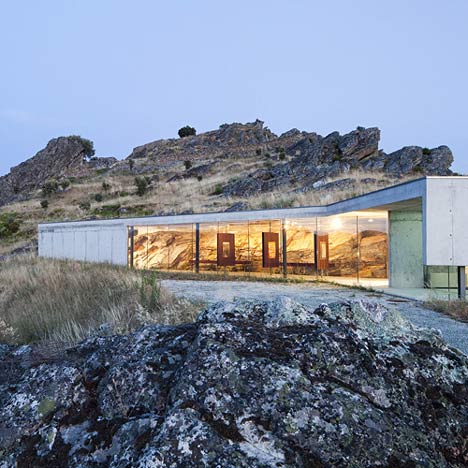
Interpretation Centre by Paulo Gomes
Photographer Nelson Garrido has sent us his photographs of a visitors' centre by Paulo Gomes that's nestled into the rock face at an archaeological site in Murça, Portugal.
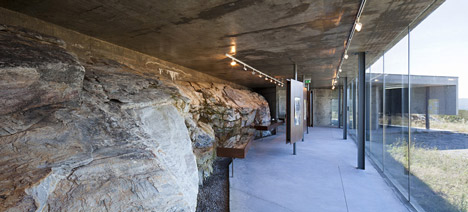
The back wall of the interior is formed by the rock itself, while a glazed facade affords views down the hill.
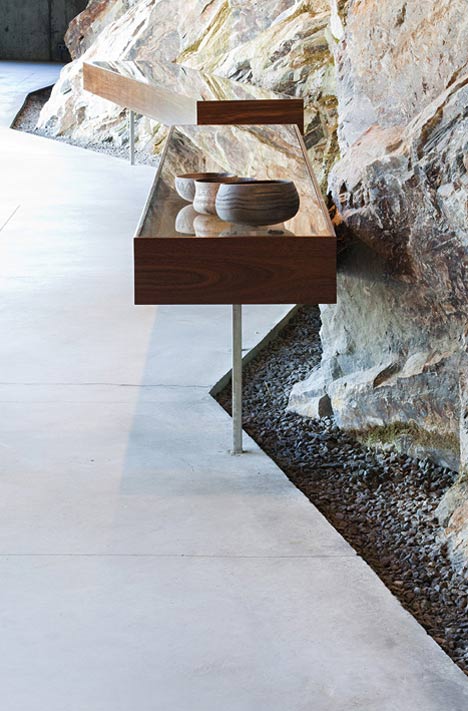
The concrete structure houses an information point, reception, cafe and toilets, plus a display of objects excavated from the site.
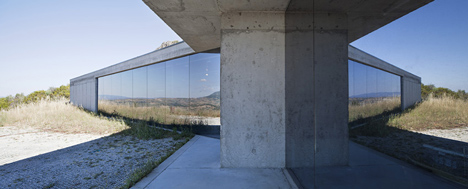
The text that follows is from the architect:
This building project works for the infrastructure to support the archaeological site of Crasto Lofts, consists of building for the reception and interpretation center, parking, paths to visit the site and outdoor equipment and safety signage route.
The archaeological site is located on a hill with 590m elevation on the ridge, southeast of the village of Haystacks, and the area of the "hot land" of the county Murça.
In September 1995 held the first archaeological work to support IPPAR, the National Board for Scientific Research and Technology and the Municipality of Murça - City Hall.
The draft recovery of archaeological study and dissemination of archaeological site was the construction of a building for the reception of visitors and interpretation of the site, defining the routes of access, signage and support equipment and a car park.
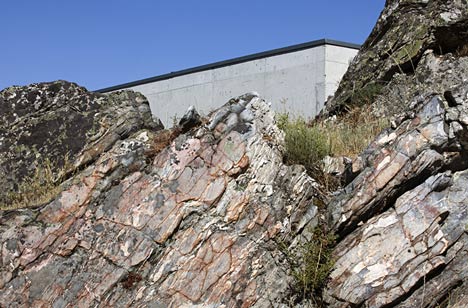
Location of archaeological and occupation process
The Castro Lofts is situated in the parish of Haystacks, county Murça and occupies the summit of an imposing quartzite massif located between the villages of Haystacks, and Monfebres Varges. The perspective view of the sunset, we can retain from the cold land of the county, shows a lot of sharp ridge as a gray crystal. Incorporates an archaeological area exceeding 2.5 hectares in area bounded by a stone embankment.
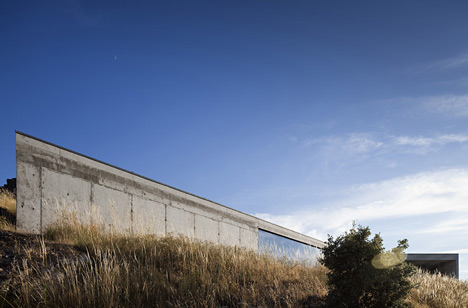
The Crasto was occupied during the following periods:
1 - In the Chalcolithic from the beginning to the end of March. Rd millennium, the structures are implanted a constructive upper deck (sort of "Acropolis"), between 575m and 590m in elevation, much-upright, sustained and flanked by a powerful stone embankment . Another platform, bottom, between 565m and 570m in elevation, is developed around that slope, surrounding the central hill district in north-east, and is, in turn, bounded by an even more powerful stony slope, which separates this built space surrounding area. In both structures are residential structures in the 3rd millennium BC.
2 - During the Iron Age, in 300 BC, the site was chosen for implementation of a "village". This is a village of farmers, shepherds, metallurgists and manufacturers of glass ornaments. During the year 400/500 that their occupation lasted, on both platforms space "urban" has been subject to constant changes.
3 - Around the first century, its inhabitants built a system of walls on the top line of the embankments of the Chalcolithic period. There are two walls: an inner, fitted with a monumental entrance and surrounding the upper deck or "Acropolis", one external, which borders the village from outside.
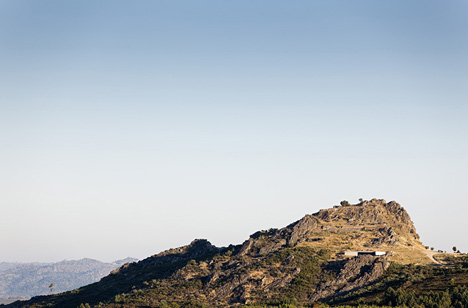
Central reception and interpretation
The building intended to accommodate the interpretive center of the archaeological site, located northwest of the fort hill.
The concept of the project study is organic food demand and an installation process of animal "asado". The shape is a parallelepiped long to prepare a route. It nests in the depression between two hills, squeezing his hard parallelepiped shape against the rock mass and seeing the gross cubic structure torn threads against the laminated shale.
If we see, who first built here, superimposed stones to the slopes to define an "outside" and an "inside", who came here later built small vertical walls on the tops of hedges and stone walls in place to defend itself.
At present, this structure is here to welcome, explain and explain. The place is not just a refuge, the village, the factory. It is place to find men, spaces and times that are a part of us.
The building is worked in the constructive expression of mater as a tent, reinforced concrete, supported by the front glass and metal sections with my back to the burrow fraga.
The entrance is where the curtain rises. Is made by the glass surface, directly into the reception and exhibition hall, which also serves as access to outdoor living space overlooking the entire landscape north of Castro.
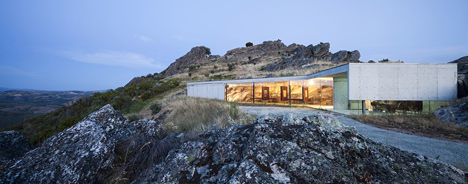
The space hosts a small exhibition consisting of different materials and objects from the archaeological dig, and has a video installation where they spend several times the recovery site. The building will have sanitation facilities for visitors as well as a space bar linked to the reception. The interior space is open and fluid and enclosures are the only sanitary facilities and space for the water tank.
Access to the parking building will be only pedestrian and road winds its aim is to lead the visitor to observe more carefully the site and relationship with the extraordinary air gap Tua River valley. The technical building is located 30m north of the main building, would be fully buried. This building will install a generator capable of supplying electricity to the main building.
Architectural project: Paulo Alexandre Gomes Fernandes
Project Expertise: Norvir-Consultores de Engenharia, SA
See also:
.
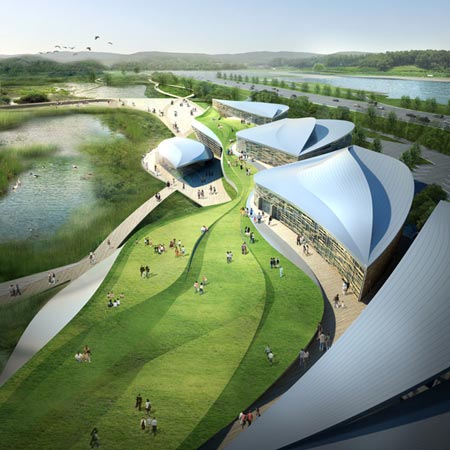 |
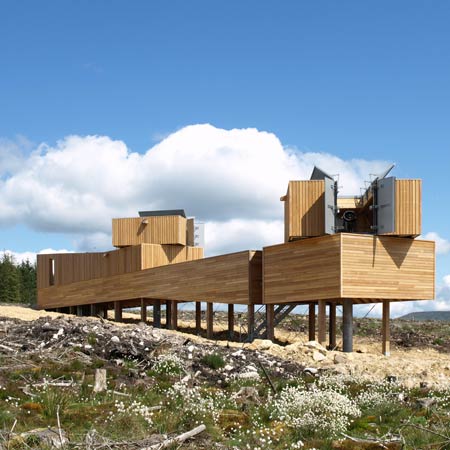 |
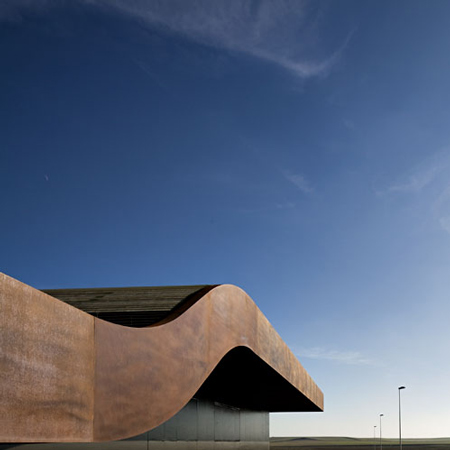 |
| Suncheon International Wetlands Center by G.Lab* | Kielder Observatory by Charles Barclay Architects |
More photographs by Nelson Garrido |